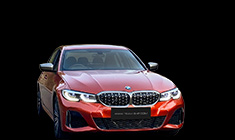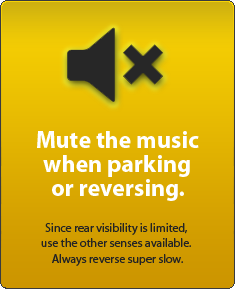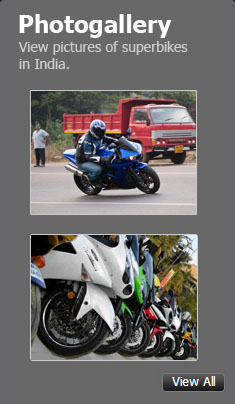News
Toyota Fortuner Facelift: Our views after 3 days with the SUV
The Fortuner gets a 2.8L diesel that uses a variable geometry turbocharger. Toyota has equipped the SUV with driving modes.
Toyota Fortuner Facelift 2.8L Diesel AT Review
The Fortuner gets the same 2.8L diesel that powers the pre-facelift Fortuner. This motor uses a variable geometry turbocharger. It now produces 201 BHP (@ 3,400 rpm) and 500 Nm of peak torque starting at a low 1,600 rpm (held till 2,800 rpm), which is 26 horses and 50 Nm up on the old Fortuner. Thanks to the hike in power, this new engine is even better now. It is more eager and the throttle response is really nice and sharp.
Like before, Toyota has equipped the Fortuner with driving modes. These include Normal, Economy and Sport. The Sport mode was called Power mode in the outgoing car. The Normal mode now gets a separate button to engage it. This is a superb way of customising the engine / throttle behaviour for prevailing driving conditions.
- Normal mode: If neither of the two (eco or sport) modes is selected, the Fortuner's engine runs in normal mode. This is a balance between economy & power.
- Eco mode: Press the ECO button on the center console and the power delivery is lower, with the throttle response dulled a bit. That said, because the engine is big & powerful, ECO mode is very useable in the city. It doesn't feel sluggish at all and there is more than enough grunt on tap to keep up with traffic. On a lighter note, having ECO mode on a big 2.8 diesel is in itself a contradiction.
- Sport mode: Engage Sport mode and you'll feel the throttle to be sharper. The engine is very, very responsive in this driving mode. Acceleration times also noticeably improve.
The Fortuner Automatic doesn't use a fancy dual-clutch transmission. Instead, a simple old school torque-converter unit does the job. It has proven to be super reliable too. The Fortuner AT isn't going to wow you with lightning fast shifts or super smart logic, yet it will take you from point A to B in extreme convenience. The AT doesn't leave much room for complaint, but it doesn't give you anything to write home about either.
Press the brake pedal & hit the engine start button to fire her up. The AT's gear shifter is calm and composed. It remains that way on the move. However, on startup, the car suffers cabin shake. At idle, the big 2.8L diesel is audible on the outside, but shut the door & windows and the noise goes away. Cabin insulation is very good. Outside noise stays outside (note: engine noise is audible at higher revs).
Thanks to the torque converter, the way the vehicle moves from a standstill is smooth & seamless. In bumper to bumper traffic, the transmission's creep makes the Fortuner crawl at 8 km/h (without accelerator input). You can drive with just your foot on the brake pedal through bottlenecks. Peak torque is developed early @ 1,600 rpm, thus there's very little lag to speak of in the AT. Even at low rpms, the throttle is responsive. With a light foot in the city, upshifts happen at as low as ~1,500 rpm! This helps you cruise around with smooth shifts & low engine sound. The AT is keen to upshift and will quickly make its way up the ladder - at times, you'll see upshifts happening as soon as you take your foot off the accelerator (uncool for people like us who like engine braking). This is a big & powerful diesel, hence you don't need to give it heavy revs within the city. Soft inputs work best for normal commuting. However, press the accelerator halfway in and shift quality definitely becomes perceptible. While the gearbox is still overall smooth, it's not an absolutely seamless shifting experience above 2,000 rpm. You'll know when the shifts are taking place. The engine & gearbox are also very responsive to throttle input. Some owners might feel that they are in fact too responsive! Even in normal mode, the engine revvs with a slight tap on the pedal. This is why you'll see the 2.8L revving unnecessarily when shifting between the lower gears. Solution? Eco mode.
On Team-BHP, we don't usually recommend driving around in ECO, yet for the city, we'll make an exception with the Fortuner AT. Because of the dulled throttle response, the driving experience is smoothest in ECO. This is the mode you have to use within the city and - as mentioned before - it's still quick enough. Sport mode for your daily commute? Fellow passengers will find it too jerky as the throttle is damn sharp. Drive around town in ECO mode and the experience is calm.
On the open road, the Fortuner AT is a fast SUV. The engine remains responsive above 2,500 rpm. Because of its big engine and the power on tap, you'll never be left wanting for punch. Also, sport mode does bring an enhanced sense of urgency to the engine (although normal & ECO are useable on the highway too). The Fortuner AT can be a lively intercity express. In kickdown, upshifts take place in the vicinity of 4,000 rpm. Don't drive it in a pedal to the metal style though. Rather, you should build up speed gradually, else you'll get a lot of noise as the engine revvs & the gearbox drops a gear (more on NVH later, but it makes quite a racket for a premium SUV). Best part about the car is its cruising ability. Thanks to the tall 6th gear, 100 km/h comes in at merely ~1,500 rpm. At this point, engine noise is virtually absent. The Fortuner AT is a very calm long distance cruiser. Overtaking doesn't pose a problem at all. There's ample power and you have a great view of the road ahead. However, the 6-speed has that conventional AT lag (~1 second) between your putting the foot down and the gearbox downshifting. After that, she pulls away nicely. I did face one problem at high speeds here - due to conservative tuning and limited revs, at times if you jump out of the lane and want to overtake, the gearbox drops just one gear when you wish it had dropped two. The downshift logic isn't aggressive and you'll need to be patient in such a situation. Thus, on two-lane highways where you need to make quick moves, I'd recommend Sport mode. It'll give you more punch. Another option is to prepare the car for overtaking (via a downshift using the paddle shifters) before the actual move. Overall, the gearbox logic is good. It is smooth, responds well to accelerator input and when driving hard, it knows when to hold on to gears as well.
These paddle shifters are of good quality and very well placed, making them convenient to operate. However, at times, there is a noticeable lag with the paddle shifts – the actual gear change happens so late (1+ second) that you can’t really depend on them. The only time you should use manual mode is for overtaking and when you need the additional engine braking (say, going downhill). Other than that, I don't see anyone playing with the manual mode in a big, fat SUV. Further, manual mode is tuned conservatively. It won't allow aggressive downshifts where the resultant rpm would be too high, thus you can't entirely rely on it for engine braking when running down a ghat.
The Fortuner's S mode is very funny. Actually, it's not an S mode at all. Remember the D2 / D3 / D4 positions on older ATs which denote the max gear you are allowing it to shift up to? That's exactly what the Fortuner AT does in 'S' mode. As an example, move the lever to S and you'll see S4 on the instrument cluster chosen by default. This doesn't mean that the current gear is no.4. Rather, that's the topmost gear that the AT will drive in. It will remain between 1 - 4. You can similarly choose to restrict the AT to 3rd; drive at 4,500 rpm all day long and the box won't upshift. This is unlike proper 'S' modes which move up the shift points and give the gearbox a more aggressive nature. No such thing here, Sport mode doesn’t necessarily result in a lower gear for every situation. The problem is, the layman won't realise this. He'll select 'S' mode thinking it's quicker and see 120 km/h at higher revvs in 4th (as S4 is chosen by default). Many people won't even know what they are supposed to do for easier cruising. Only an enthusiast will manually shift up to S5. This feature is very useful while off-roading but it is quite stupid for an SUV that is going to be used primarily on-road, especially in the 2WD variants.
Paddles shifters work just like the S mode - they set the highest gear that the gearbox will use. If you use the paddle shifter on the road, the only way to get back to full auto mode is to move the gear shifter to the right to S mode and then to D. This car should have paddle shifters that work the conventional way in 4X2 mode.
Those looking for a real 'sport' mode can keep the gear lever in D, but select the engine's Sport mode. The real S isn't on the gear shifter...it's on the center console!
In terms of NVH, at idle, the diesel is audible on the outside, but shut the doors & windows and the cabin is sufficiently insulated from that sound. At city rpms (2,000 rpm & under), engine noise is under control. Even above that, the 2.8L emanates more of a 'hum' rather than a 'clatter'. It's a typical big diesel hum that you won't see in smaller engines. Over 3,000 rpm however, the engine does get noisy. And it's not got a nice note. Where the now discontinued Endeavour 3.2L sounded sweet, the Fortuner is too utilitarian. Take the revv needle to 4,000 rpm and the diesel gets awfully loud. Passengers will ask you to back off.
Due to the heavy kerb weight, large engine size & AT, don't expect FE to be high. Depending on traffic conditions and how happy your right foot is, you can expect anywhere between 7 - 10 km/l (tops) in the city. On the highway, figures should be more respectable, thanks to the 6th gear & low cruising rpms. An ECO light comes on in the instrument cluster when the car is being driven economically.
Toyota Fortuner Facelift Ride & Handling Review
The Fortuner comes with a double-wishbone front suspension and a 4-link solid-axle rear. On uneven tarmac, the car does feel jiggly, and even small bumps & undulations make themselves felt inside the cabin. It rides like a typical body-on-frame UV, and sharp bumps come in strong. Some of this is definitely down to the 18” rim size. While the suspension goes about its business silently, it will always let you know what kind of road you are travelling on. As the speed increases, absorption levels get better. The suspension is set up on the firmer side and that helps its highway ride quality. She doesn’t bounce about on undulating roads. At speed, you won’t even be slowing down for broken roads. Still, highway comfort levels aren’t what we’d call great. For instance, joints on the expressway are transmitted inside the cabin. Overall, we’ll say that she’s liveable, but not plush at all. GTO says that the Fortuner's ride quality is one of the biggest deal-breakers for him. Ride comfort is an area where the soft Ford Endeavour demolishes the Fortuner.
On the move, the Fortuner feels very sturdy. Straight line stability is very good and this Toyota stays composed at high speed. Crosswinds don't seem to affect it either. Take corners and you’ll feel the body roll. You have to remember this is a tall body-on-frame vehicle and be conservative while tackling curves. It’s definitely no corner-carver like some monocoque SUVs and shouldn’t be thrown around on winding country roads. Be mindful of its height & weight. To their credit, the 265 mm tyres provide a healthy amount of grip. All variants of the Fortuner get ESP / VSC which can be a life-saver in an emergency manouveur. Newbies will also appreciate the ‘hill start assist’ feature which holds the car in place on inclines. It prevents rollback in stop & go traffic. The 4WD variants are further equipped with downhill assist control.
The Fortuner’s steering is hydraulically assisted. It is heavy at parking or crawling speeds. This means parking the large SUV into a tight spot will require a good deal of effort; those who are used to modern EPS systems will inevitably complain. Once the speedometer needle climbs, the steering does feel easier to operate. It also offers sufficient weight on the highway.
The 5.8 m turning radius is large, yet par for the course in a UV of this size. You will be making 3-point turns more often than not. Additionally, the steering takes ~3 1/4 turns from lock to lock. Piloting such large SUVs isn’t easy in narrow and crowded areas.
Continue reading the discussion on the 2021 Toyota Fortuner Facelift on our forum.


























